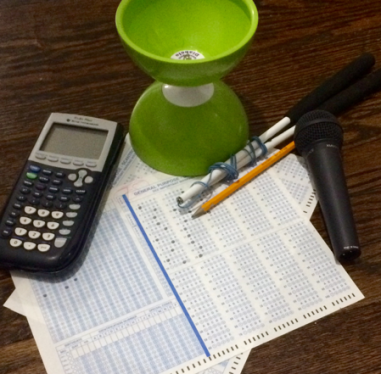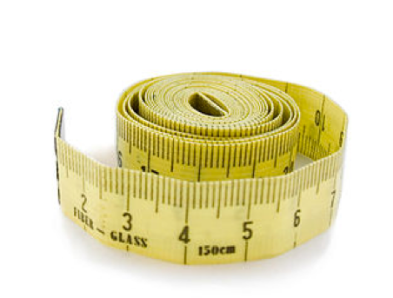As I was helping my sister prepare for her job interview a few weeks ago, it struck me that she did not believe she was qualified enough to get the job.

Her confidence and enthusiasm about the job waned every time she thought about her GPA. “The average applicant has a 3.9,” she said, and I reassured her that she had other qualities that would deem her suitable for that position. After our video call ended, I could not help but think of the times in which the statistics of the “average” applicant affected my life.
“Am I qualified?” It was a thought that entered my mind when I had applied to jobs and college, and again when I was applying to graduate school. I remember classifying certain schools with words such as “safety,” “possible,” and “reach.” My classmates used these terms as well when referring to schools and even companies where they wanted to work. Many college counselors and academic advisors have also used these terms when discussing post graduation plans with students. Most often, we determine this ranking system by comparing the interested student’s GPA, GRE scores, SAT scores, and extracurricular activities to that of the “average” applicant. I never questioned this approach, as this ranking system had been in place for as long as I have been in school; however, after talking to my sister I began to question why comparing yourself to the average applicant is the standard.

As someone who really enjoys history, I started my investigation with the origin of the societal average: Adolphe Quetelet. Quetelet, an astronomer by training, used the mathematics of astronomy to develop a definition for “average” in describing a society.1-2 He knew that when scientists take multiple measurements of the speed of celestial objects, they obtain a different measurement each time; therefore, they take a statistical average to get the overall speed. He extended the concept of the statistical average to people.
In Quetelet’s definition, however, average was not considered “mediocre;” instead it was the ideal. Anything that deviated from the average, in either direction, was far away from what one would strive for. This is not the definition that exists in society today, or at least it is not the one that we tend to identify with. But this was interesting for two reasons: I learned that using averages in society has scientific roots, but perhaps more importantly, I learned that the definition can be changed.

Recently, in applying to various fellowships, the thought of “average” consumed my thoughts once again. I began thinking about my résumé and about how I was weak in some areas and strong in others. That was when I decided to change my perception of the average applicant. I thought back to what I had told my sister and realized that with all the variables that are considered in an application, having all the characteristics of the average applicant in one person is very rare and even unrealistic. It became meaningless and detrimental to compare myself to something that now seemed so unreal.
This realization stemmed from an example in Todd Rose’s book The End of Average, and has helped me gain confidence as an applicant. In this example, Rose describes the U.S. Air Force in the 1940s. When the Air Force wanted to design the cockpits of new aircrafts for combat, they used the average measurements of pilots including height, the length of the limbs, and chest size. This approach, however, left many pilots injured and the injuries all pointed back to the design of the cockpit. In this case, the “average” cockpit design was not ideal for many of the pilots. In fact, it would not fit a single individual pilot!1

The example from this book resonated with me and as I mentioned, I have gained confidence as an applicant as a result of it. I am no longer striving to meet the requirements of the average applicant — I now strive to showcase my own strengths. To quote Sherlock Holmes,
“while the individual man is an insoluble puzzle, in the aggregate he becomes a mathematical certainty. You can, for example, never foretell what any one man will do, but you can say with precision what an average number will be up to. Individuals vary, but the percentages remain constant.” 3-4
This quote continues to inspire me to be myself. It reminds me that I am more than numbers collected from a group of people, that I am a multi-dimensional, unique individual and an amazing applicant! To paraphrase an old adage, take risks and do not let the statistics scare you because you can’t land among the stars unless you shoot for them!
And as for my sister, she got the job!

EDUCATIONAL RESOURCES
- PBS LearningMedia: Finding Averages as Means (grades 4-7)
- Victoria, Australia Department of Education: Average Height of Class activity
REFERENCES
- Rose, Todd. The End of Average: How We Succeed in a World That Values Sameness. HarperOne, 2016, Print.
- Jahoda, Gustav. “Quetelet and the Emergence of Behavioral Sciences,” SpringerPlus, 2015, 4:473. doi: 10.1186/s40064-015-12617
- Pennington, Maura. Sherlock Holmes: A Case for the Individual. Forbes, 2012.
- Doyle, Arthur Conan. The Sign of the Four. Lippincott’s Monthly Magazine, 1890, Print.

Fantastic article with a great message!